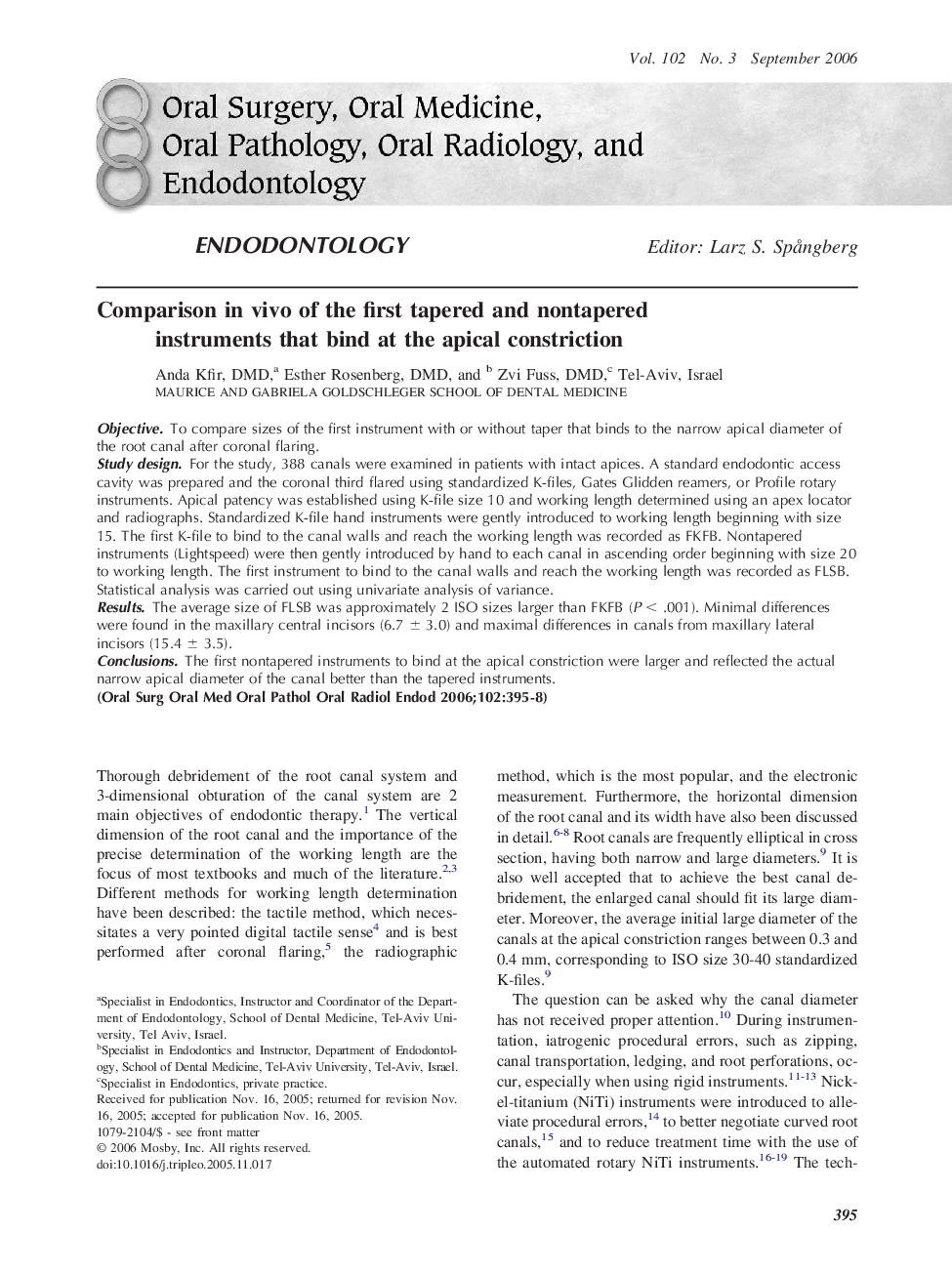| Article ID | Journal | Published Year | Pages | File Type |
|---|---|---|---|---|
| 3169929 | Oral Surgery, Oral Medicine, Oral Pathology, Oral Radiology, and Endodontology | 2006 | 4 Pages |
ObjectiveTo compare sizes of the first instrument with or without taper that binds to the narrow apical diameter of the root canal after coronal flaring.Study designFor the study, 388 canals were examined in patients with intact apices. A standard endodontic access cavity was prepared and the coronal third flared using standardized K-files, Gates Glidden reamers, or Profile rotary instruments. Apical patency was established using K-file size 10 and working length determined using an apex locator and radiographs. Standardized K-file hand instruments were gently introduced to working length beginning with size 15. The first K-file to bind to the canal walls and reach the working length was recorded as FKFB. Nontapered instruments (Lightspeed) were then gently introduced by hand to each canal in ascending order beginning with size 20 to working length. The first instrument to bind to the canal walls and reach the working length was recorded as FLSB. Statistical analysis was carried out using univariate analysis of variance.ResultsThe average size of FLSB was approximately 2 ISO sizes larger than FKFB (P < .001). Minimal differences were found in the maxillary central incisors (6.7 ± 3.0) and maximal differences in canals from maxillary lateral incisors (15.4 ± 3.5).ConclusionsThe first nontapered instruments to bind at the apical constriction were larger and reflected the actual narrow apical diameter of the canal better than the tapered instruments.
